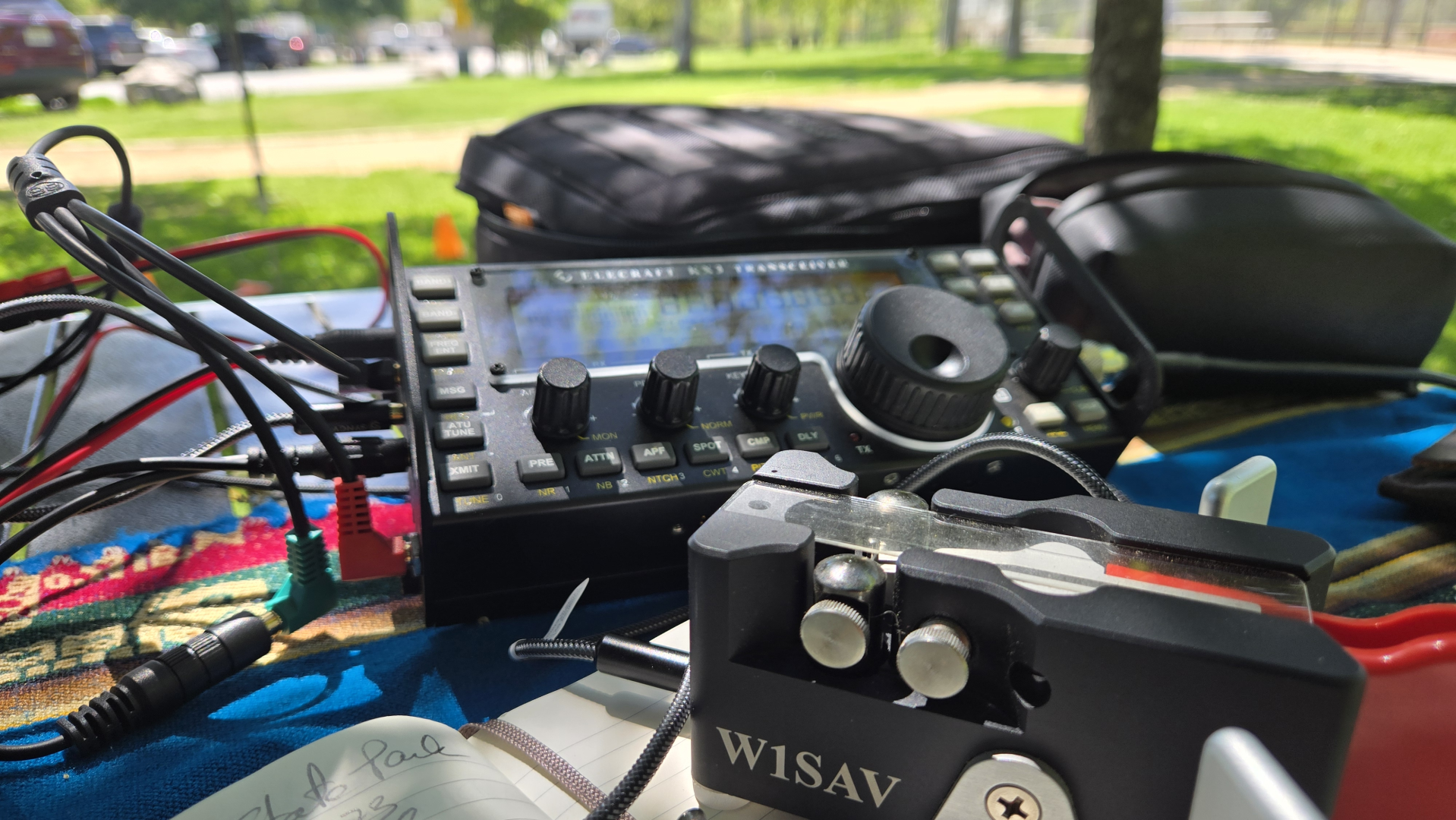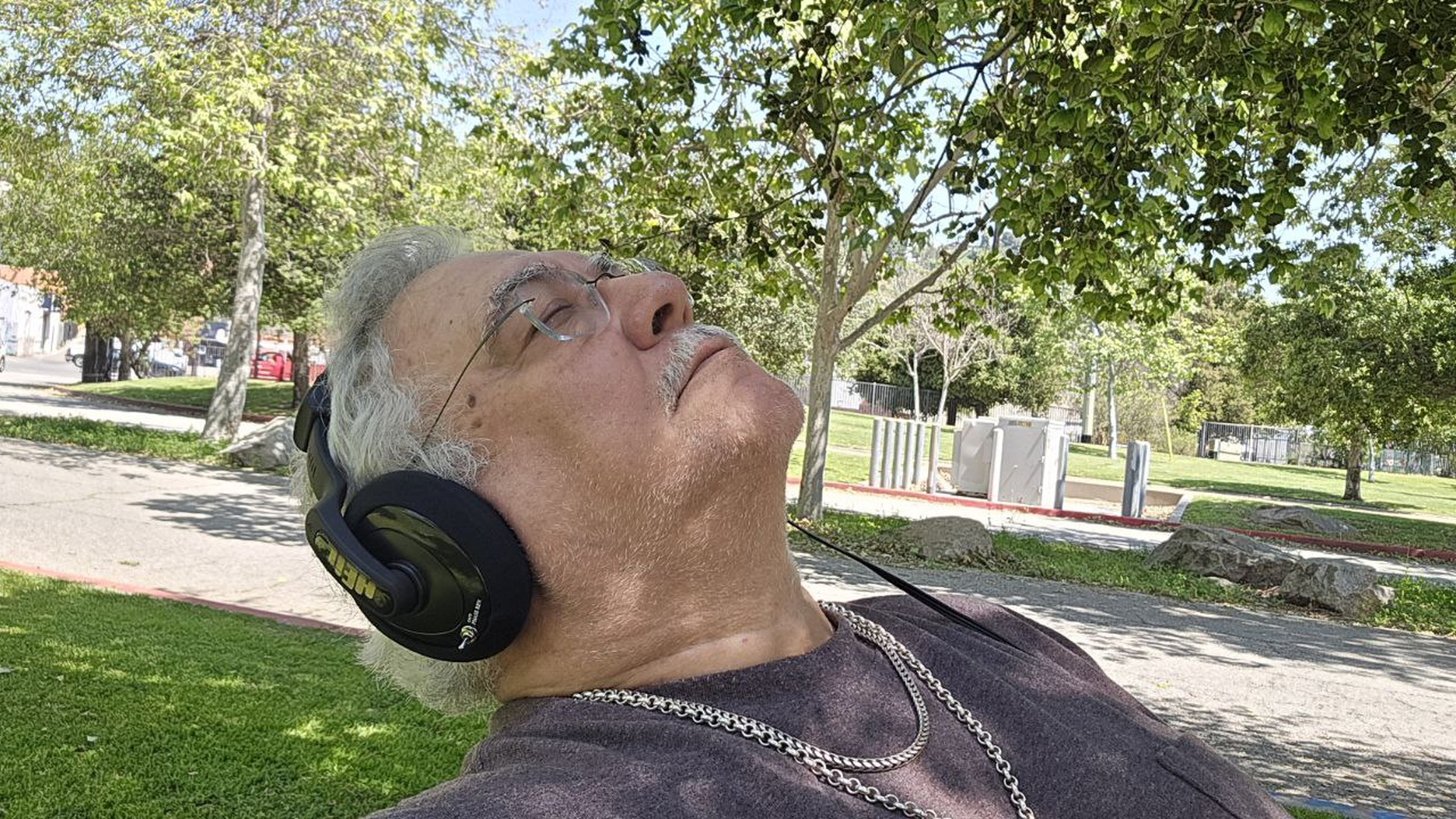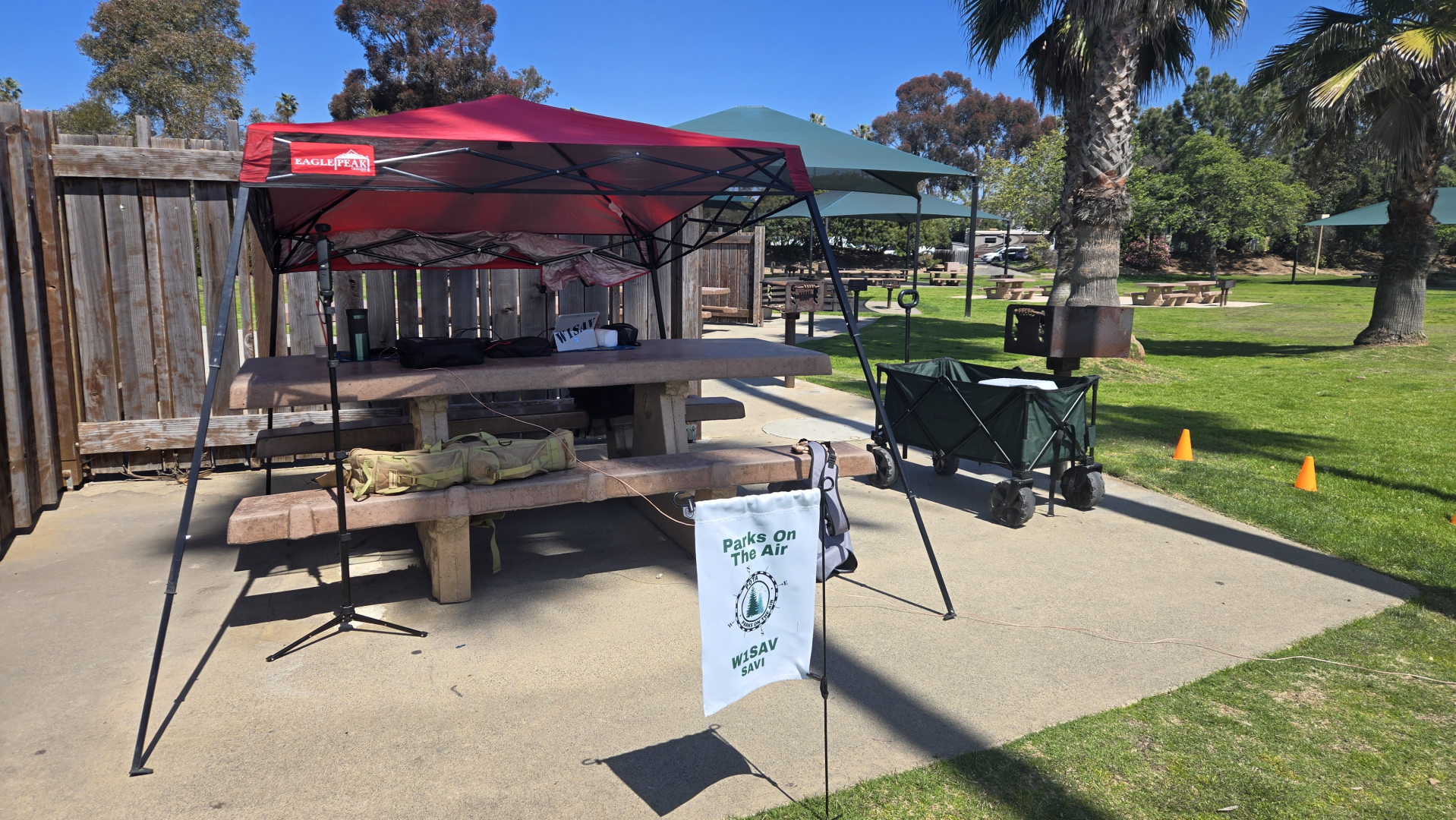
Activated on October 29th, 2023
My activation of Placerita Canyon State Park was decided on at the spur of the moment. Everything went right until it didn’t. Another opportunity to learn dropped into my lap; I just didn’t know it. I am much calmer about this than last time. Stick around…
My day started much cooler than I expected. The sky was clear with noticeable winds when I left home. As is my normal routine I stopped at Albert’s for some breakfast before heading out on my 40-minute drive. When I finally reached the park, it was a clear day with a bright sun…and winds. As is my custom, I try to engage the park staff to let them know of my intentions. Instead, I came across a volunteer with a beautiful hawk on his outstretched arm. The hawk was rehabilitated after it was found with a broken wing, possibly a consequence of hunting a larger-than-average prey. Can it fly I asked, “Better than me,” he said, “but not well enough to survive in the wild”. It was a beautiful raptor with stunning eyes that had the intensity of fire.

With no entrance fee required, I went off to find a spot to set up, noticing the gusts of wind and the dust lifted into the air. Since I was literally surrounded by mountains, I looked for a spot that would afford me the best angles to the east. For the first time I chose not to set up my small pop-up. I took the thing to my chosen site, but decided against it and took it back to the car. In retrospect, that was a wise decision as the gusts of wind would have had it tumbling away—small stakes notwithstanding.
So, I set up in the open in direct sunlight. It was quite pleasant, and the winds added just a hint of a chill. I then started with my MPAS 2.0 antenna in its TDL configuration, that up-side-down triangle with the apex pointing to the ground. After the antenna was set up, I kept going back to it to put it back in my desired orientation as the wind kept making it rotate. The thing is that I took SWR reading during a lull in the winds while the antenna was oriented broadside to the east. The wind kept rotating the antenna to the southeast. After looking around for sticks, I ended up using two, about an inch in diameter, that I pounded into the ground keeping the antenna properly oriented during the gusts of wind. Crude, but it worked.

The SWRs were quite good, and I finished setting up the rest of my gear, after which came my technology. Telegram, Discord, and the POTA website came up without a hitch. Feeding HAMRS with all needed data, I spotted myself on the POTA site, and called CQ for the first time at 19:50Z. I had a 1.1:1 SWR reading on the 15-meter band, and all was well.
The first two contacts I made did not populate their data on HAMRS, although later checks showed them to be valid callsigns. My experience now tells me to not sweat it, although I must confess that my brows became slightly moist. Nothing went wrong here, nothing to see. In retrospect, there could have been a translucent man in a hooded robe slowly waving his hand saying. “These are not the data you’re looking for, move along.”
HAMRS populated the rest of the contacts’ data with no issue. My contacts came in pretty consistently. So much so, in fact, that I had a couple of pileups. Literally concentrating on one “voice” helped me work through the pile-up. Sometimes, a second contact will come in right after, other times, meh. All this while I continued activating through the wind and the dust. My tablet, radio, and key were now covered in dust. This made it difficult to see my tablet’s screen which I had to wipe it clean a couple of times. This is the first time I experienced this. Is this a lesson for next time?
My antenna performed admirably once again. And again, I was surprised by my making contact with a station in New York state. Chameleon says the TDL will perform NVIS propagation on 80 and 40 meters. Since I was on 15 meters, NVIS does not apply, yet I was still surprised it got over the mountains to my east to reach New York.









Having passed my self-imposed minimum of 13 contacts, I continued because I had two suspect QSOs at the start of the activation. When I reached 15, I was looking to go QRT. This is when two more contacts came in extending my activation. Having made those last two, I sent out a QRT and mirrored that on the POTA site. I relaxed in my chair getting ready to pack up and leave. It was at this time when I saw several boys being escorted by parents passing by in front of me.
I called out to the group and asked if they were cub scouts. I recognized the profile as my son was a cub scout once as well. I offered the den leader a 10-minute talk about ham radio which they accepted. The boys were quite interested and were engaged in the topic. The den leader took a picture of the boys around me; I wish I had done the same. It was pretty cool. I then packed up and left for home to do work on my post-activation tasks. It was then that I realized the error of my ways.
HAMRS has never given me any problems. In fact, it worked perfectly this time as well. My problem is that I never expected the time clock, once paused, to remain paused when starting a new activation. It is clearly colored red for anyone to see, but I focused mainly on entering the needed data for the current activation. And if truth be told, my tunnel-vision was a result of my apprehension prior to the start of my CW based activations. It’s getting better, but I still have pause once everything is set up to the point of spotting and making my initial call. So, I blew past the red button and made 17 contacts oblivious to said red button.
Once I got home and started to work on my log, it hit me: all my contacts had a time stamp of 17:10Z. Considering my affinity to record correct data, I came to a complete and full stop. Valid data does not mean correct data. February 29th is a valid date, but incorrect for 2023. My response to this situation was to email all 15 good contacts and ask them for the time they recorded our QSO. As of now seven operators responded and am waiting for the rest so I can upload to the online logs. You see, I log every contact and timing is important for online validation.

Here is where I find myself in a quandary. Although all the timestamps in the log are identical, the entries are in order of contact. Therefore, I expect the times returned by the operators to be relative in nature. What I mean is this: the time returned by each operator should be earlier than the next operator in the log. So, were I to sort all entries by time it should not alter the order in which I made the contacts. This is not the case. For example, my 4th contact is one minute later than my 13th contact, and 3 minutes later than my last, 17th, contact. My fourth contact is also 26 minutes later than my 8th contact. My OCD is making me flip over this. How can these times be so wrong? At least one operator told me that they don’t even log POTA contacts.
Knowing time is important, all my computers have a program installed called Dimension 4 (https://dimension-4.informer.com) to synchronize the time. The synchronization is done automatically every 15 minutes. Why so often? Because I can. This is important when it comes to FT8, FT4, WSPR, VarAC, and other digital mode programs that require synchronization to function properly. A friend of mine told me about those digital modes. Therefore, how is it that the times my contacts are returning from their log are so wildly off? And, if this is a common thing, how am I getting so many validations from eQSL, QRZ, and LoTW that require call, time, and frequency to match? Collectively I have a historical 55% confirmation rate. This is even with operators who do not do any form of QSL-ing.

There is nothing I can do about that and will use the time sent to me by the operators I contacted. I also contacted POTA to see what their requirements are with regards to time. I quote their response, “If there are no P2P contacts the time doesn’t matter. Do watch it in the future though, if you do get a P2P they must be within 15 minutes to match.” I also checked QRZ and LoTW, and they will match contacts within 30 minutes of each other.
It’s the little things in life that can make your life heaven or hell. In this case it was my tunnel-vision and the red button. Now I deal with the consequences and when I upload the logs, I will wait a few days until more contacts return their times so I can be within this 30-minute window. As for POTA, I have no restrictions as validating my first two contacts means I can upload all 17 contacts to POTA. So, what did I learn? Look for the red color. Red means stop and green means go. That is usually the case with software as well. The next thing is to get some long plastic tent stakes, so I have them handy for the next time I deploy my TDL. Finally, a rag to clean off my equipment after my activations.
It’s the little things in life.
Activation Statistics
| Activation Number | 33 |
| Date | 29 October, 2023 |
| Park | K-1184 Placerita Canyon State Park |
| Number of Contacts | 17 |
| DX Contacts | None |
| Park Activated? | Yes |
| Previous Attempts | None |
| Park to Park Contacts | None |
| Mode | CW |
| Radio | Yaesu FT-891 |
| Antenna | MPAS 2.0 in the TDL configutaion staked to the ground |
| Tuner | MFJ 939Y |
| Power | 50W using a 30Ah Bioenno battery with Bioenno 40W solar panels |



Leave a Reply